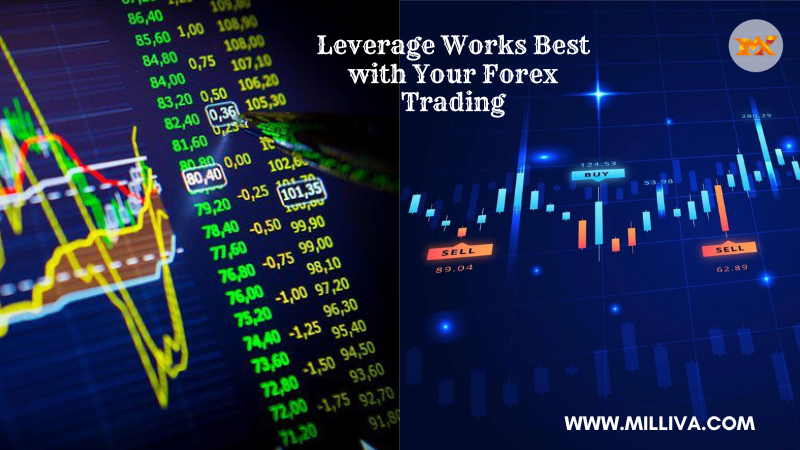What Is the Best Leverage for Forex Trading?

![]()
What is Leverage in Forex Trading
Whether you are novice Forex trader or have lot of trading expertise, you have probably previously come across the idea of leverage. If you’re new to forex trading, you might be unclear on what this phrase means. I advise you to study the essay “What is leverage” in this situation.
Amount of trading capital that broker is ready to lend to your investment in forex market is known as leverage. It depends on the ratio of your capital to the available credit.
The broker does not always provide the same amount of leverage overall. Brokers determine their commission rates, which in some situations might be 1:100 or higher. Most often, a ratio is used to describe forex leverage. In this case, it means that you can open trades for up to $100 with $1 in equity.
Defining the Different Leverage in Forex
In the world of investment, leverage trading has been crucial to the growth of forex trading. Now more than ever, investors are looking to the market as a way to stretch their money further. However, there isn’t a universally applicable leverage option available when looking at the Forex market. You must focus on margin-based leverage and actual leverage in particular to fully comprehend leverage and its possible effects.
Forex Leverage Based on Margin
By dividing the whole transaction amount by the amount of margin you must make available, you can compute margin-based leverage. Consider that you are trading USD/JPY at a $100,000 standard lot size. You would need to deposit the margin, which is equal to 1% of the total cost. In this case, the margin would be $1,000 and the leverage would be 100:1 (100,000/1,000).
Real Leverage
Divide the value of your holdings by your trading capital in order to get actual level of leverage in every position. You are trading with 10x leverage, for instance, if you have $10,000 in your account & decide to open position for $100,000. You are trading at 20x leverage if you trade two regular lots ($200,000) as opposed to one standard lot ($100,000). The size of margin and the broker’s discretion both influence the leverage that is offered.
What is a High Leverage Ratio?
Take the GBP/USD currency pair as an example.
Without using leverage, trader would need to put roughly $130,000 into opening trade with a contract size of 100,000 per lot.
One can significantly minimize the amount of capital needed by using leverage of 1:1000. Leverage used: $130,000 / 1000 = $130.
A balance of 130 USD would be sufficient to fully enter the trade.
However, keep in mind that Stop Out threshold is 20%. Its 26 bucks when you have 130 in your account.
Therefore, the drawdown must be 104 USD for the trade to be closed by Stop Out.
Given that you opened with full lot, the price only needs to move 104 points (in a 5-digit figure) in “wrong” direction from the point of entry for Stop Out to close your position. You realize what a huge risk this is.

What is the Best Forex Leverage with Examples
The best leverage ratio for forex is a relative term, as we’ve seen. Furthermore, caution must be used when using this instrument. Too much leverage can either lead to huge riches or the huge downfall.
The amount of available capital determines the appropriate leverage for forex trading. The ideal leverage for forex is thought to be between 1:100 and 1:200. In this scenario, granted proper risk management, a trader can obtain measurable benefits from margin trading. With leverage of 1:100, trader can open deals with total volume of $50,000 with just $500 in their account, which is recommended starting capital for trading on foreign currency market.
In addition, it is crucial to adhere to your own risk management guidelines, refrain from abusing free margin, and always retain a fund reserve available for the possibility of closing all open positions by stop loss in order to prevent the early liquidation of active trades.
The trader’s capital is what determines the best leverage in FX trading. Everyone agrees that the ideal forex leverage ratio is 1:100 to 1:200.
With leverage 1:100, trader can access to $50,000 in broker-provided credit funds to open trades with just $500 in account. Therefore, the ideal leverage for forex trading is 1:100.
Advantages of Using Leverage
Let’s look at the advantages of leverage for a new trader first:
1. Possibility of Earning Enormous Income
Forex traders have the option to boost their original investment to play big by using leverage.
The ideal leverage ratio
As an illustration, a trader with only $1,000 in their account can trade on the Forex market with $50,000 using a leverage of 1:15, or $100,000 with a leverage of 1:100. Simply said, if the position was opened at 100% margin and the leverage of 1:100, the trader runs the risk of losing $1,000 of their own money, but if successful, they stand to gain $100,000.
2. Boosting Capital Effectiveness
For instance, if you choose a leverage of 1:100 and your account balance is $1,000, you will actually have $100,000 USD to manage. This implies you have the chance to place more trades in a variety of trading products and use hedging tactics for increased risk mitigation. As a result, your portfolio can be more diverse, your risks are lower, and your chances of making money are higher.
3. Entry-level job
Using the prior scenario, when you have $1,000 in your account, let’s examine this benefit. Let’s assume you trade 1:1 without using leverage.
You will only be able to open one position with a minimum lot of 0.01, and not even on the EUR/USD pair, under these circumstances.
This is so because a lot on Forex is typically 100,000 units of currency. In other words, you need 100,000 * 0.01 * 1.17470 = 1,174.70 USD to start a minimum position in one of the most popular currency pairs on the Forex market, EURUSD.
Without leverage and with only $1,000 in your account, you won’t be able to initiate even a tiny trade. But because of the high leverage, even those with a little initial investment—between $50 and $100—have an opportunity to learn the art of trading and compete with professionals.
4. Optimal Financial Circumstances
The only way to trade with leverage in the past, when brokers didn’t offer it, was to borrow a very little amount of money from the bank at a high interest rate, with significant collateral and guarantees.
Forex brokers offer high leverage to entice customers with a small initial deposit and low commissions in the face of fierce competition. Utilizing leverage will be nearly free if you trade intraday. Consider SWAP, the broker’s overnight commission, if you elect to carry the trade through the night.
Higher than in any bank, the deposit growth of high-risk traders can easily reach up to 300–500% profitability per month.
Bottom Line
It’s not that difficult to figure out what level of leverage is optimal for your forex trading activities. It largely depends on how much danger you’re willing to take. The truth is that not everyone should engage in leveraged trading. Because of this, you should thoroughly evaluate any trading strategies you have, knowing how and when to incorporate leverage. Do this before you risk real money by placing it into a live market setting.
Visit Us On: www.milliva.com






Things You Must Know About CFD Trading
24th Sep 2022[…] order to open a position in a leveraged instrument like contracts for difference (CFDs). You just need to deposit a small portion of the […]